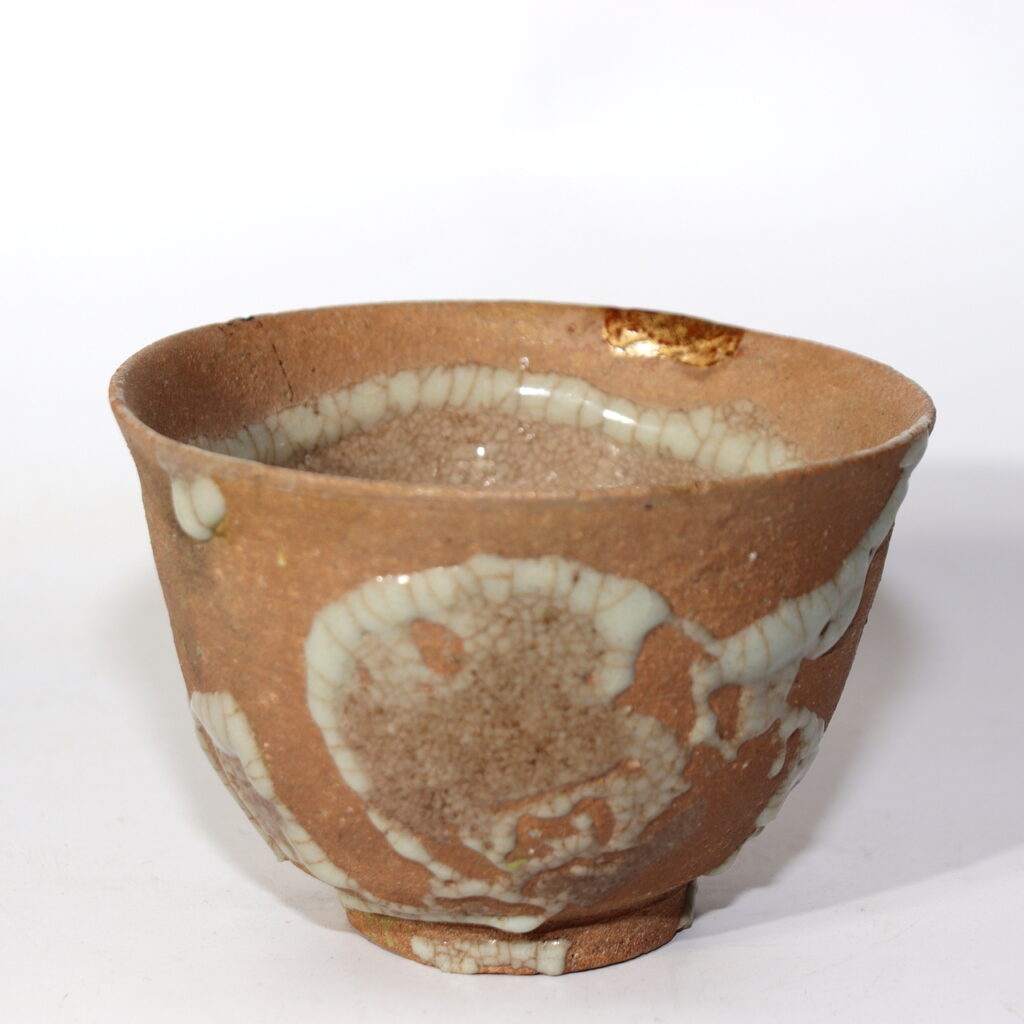
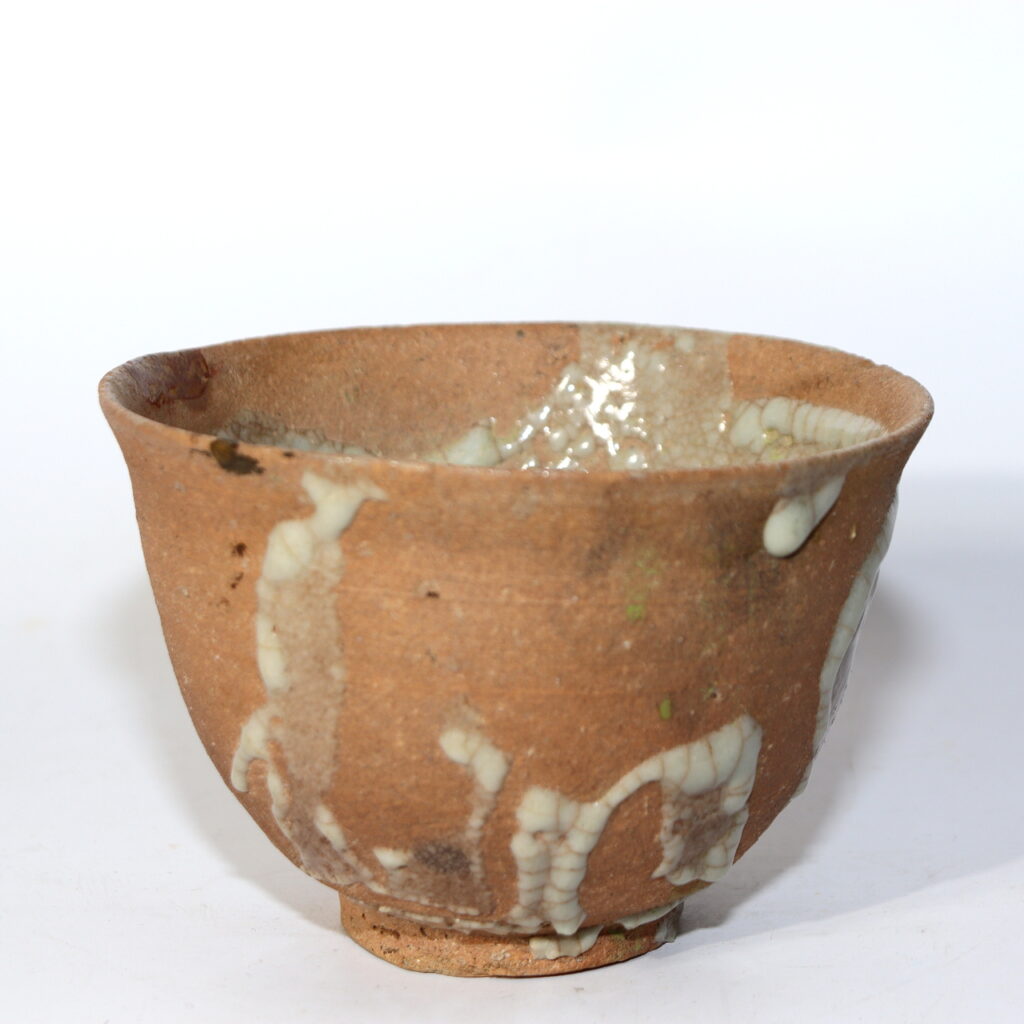
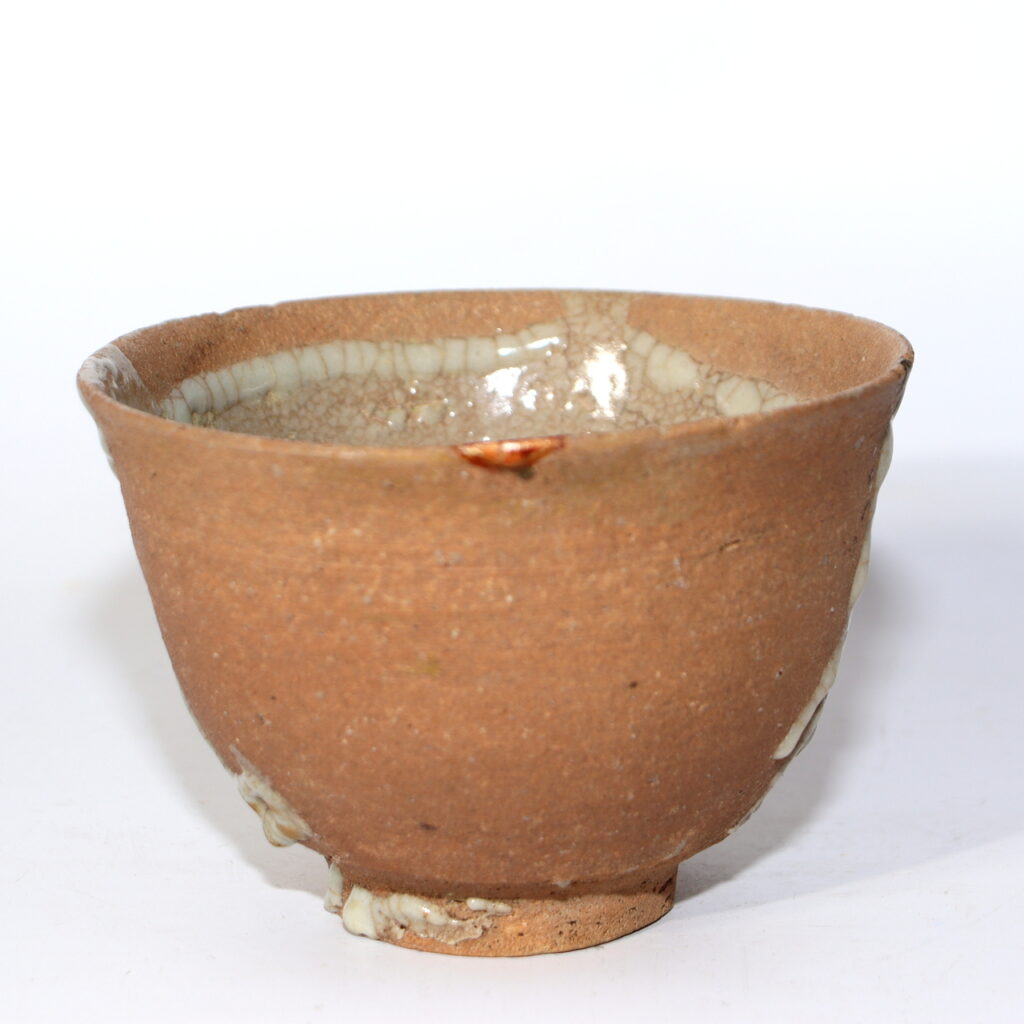
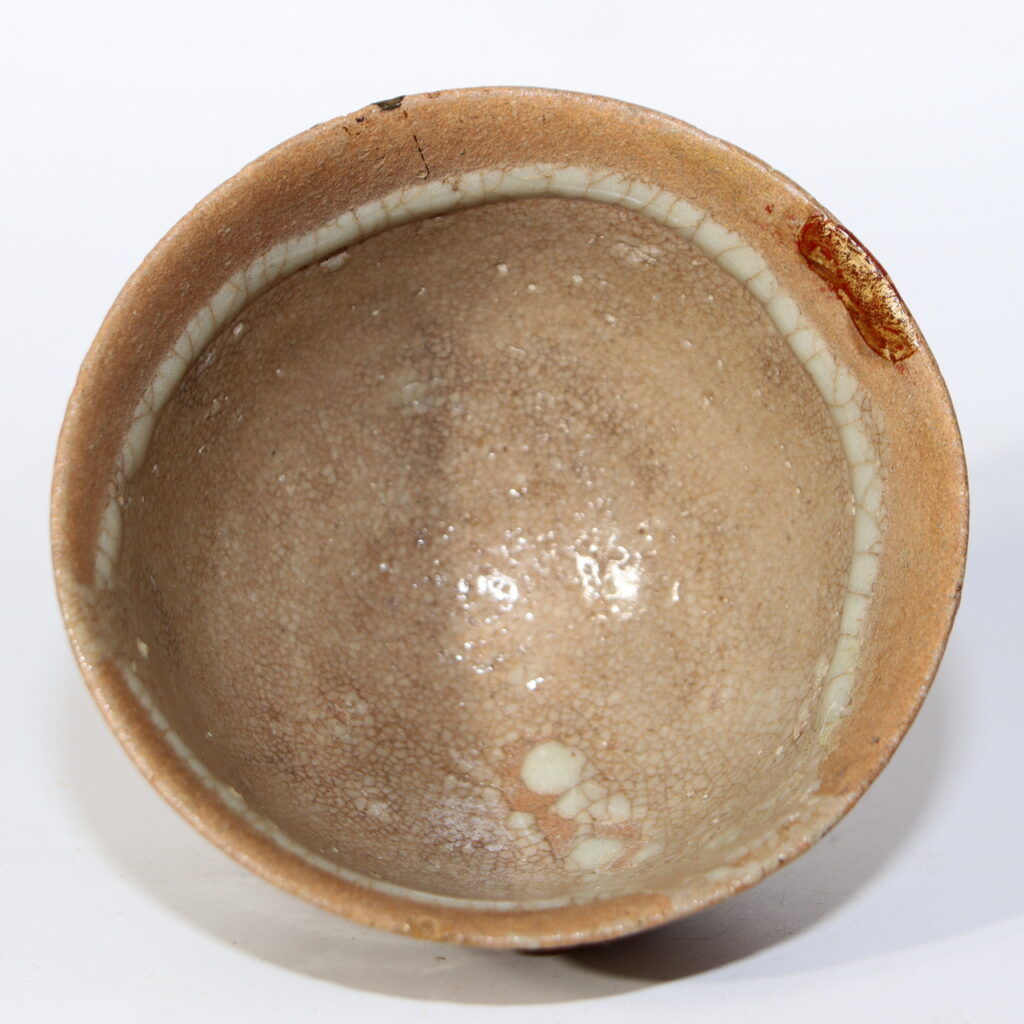
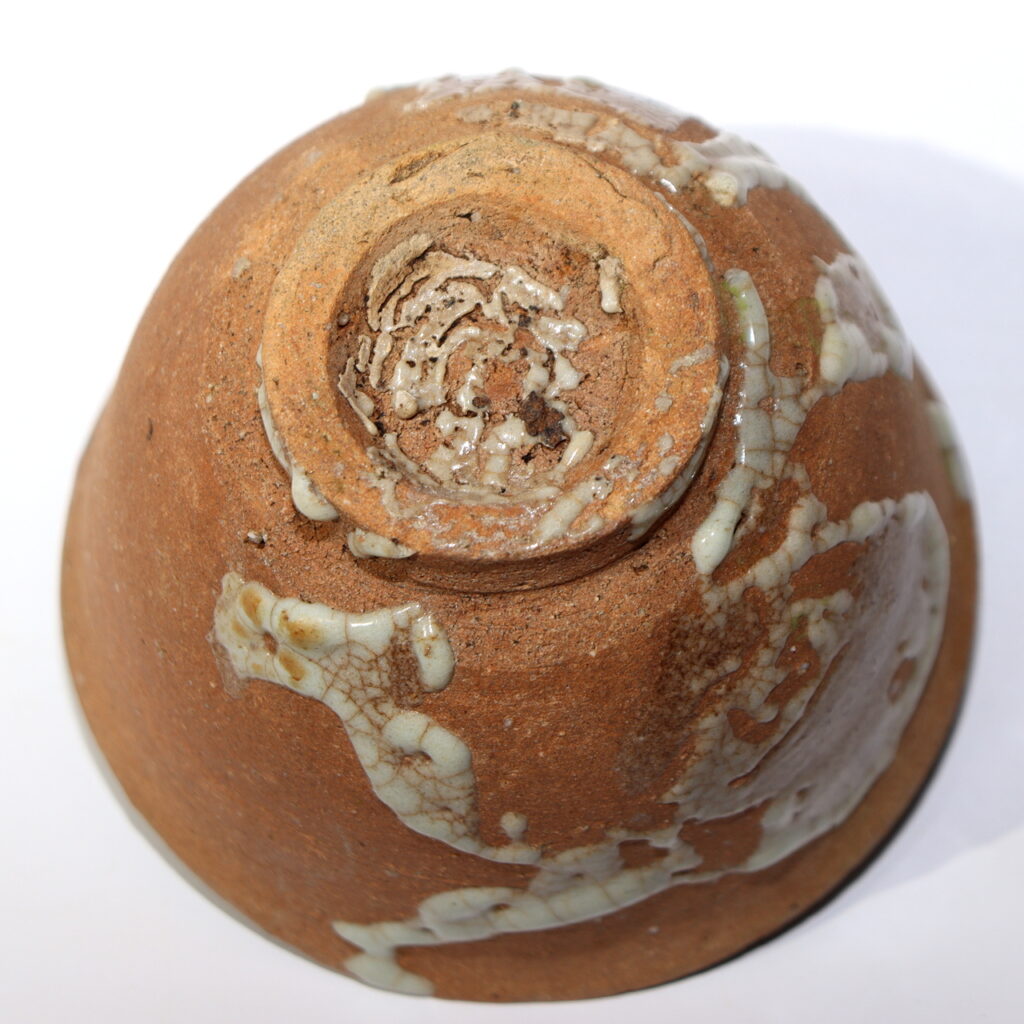
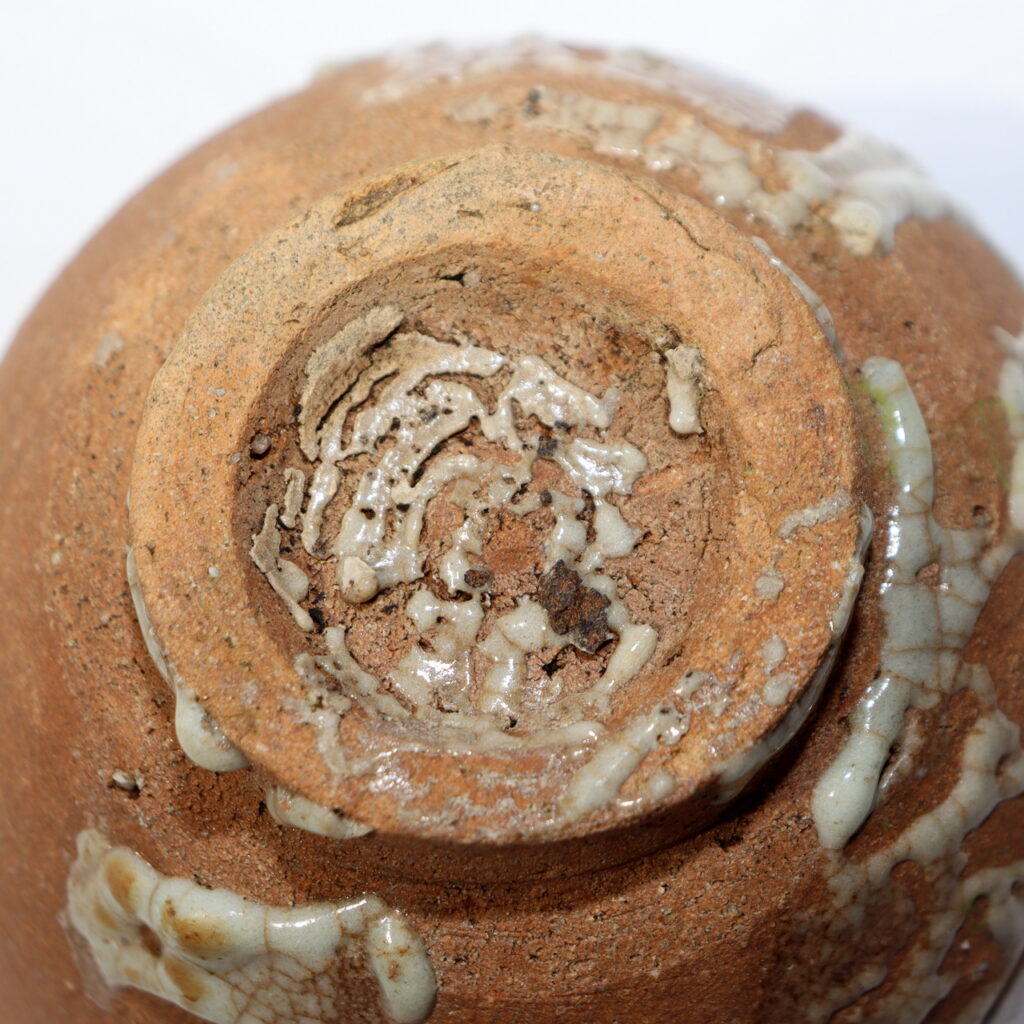
Few artifacts embody the philosophy of wabi-sabi—the beauty found in imperfection and transience—as poignantly as a weathered tea bowl. This Karatsu tea bowl, originating from the early to mid Edo period (17th–18th century), is a poetic testament to the passage of time and the quiet dignity of imperfection.
The Story Behind This Piece of Karatsu Heritage
Karatsu ware (唐津焼) traces its origins to the late 16th century in northern Kyushu. Influenced by Korean potters and nurtured by Japan’s growing tea culture, Karatsu ceramics became deeply associated with the aesthetics of chanoyu (the Japanese tea ceremony). The soft earth-toned glazes and simple, unpretentious forms made Karatsu ware a favorite among tea masters and Zen practitioners.
This particular bowl exemplifies a remarkable natural process—its glaze has partially weathered away over centuries, leaving behind feldspar deposits that shimmer subtly across the surface. This phenomenon likely occurred due to firing in a climbing kiln (noborigama), where variations in temperature caused uneven glaze vitrification. What remains today is a tactile record of both human craft and natural transformation.
Why This Bowl Captures the Eye—and the Heart
At first glance, one is drawn to the rich tactile surface of this stoneware vessel, a dialogue between smooth glaze and exposed ceramic body. Upon closer inspection, a repair along the rim becomes visible—a mark not of damage, but of reverence.
Highlights include:
- Material: Stoneware with feldspar-based, crackled glaze
- Era: Early to mid-Edo period (17th–18th century)
- Glaze Effect: Partial natural weathering, revealing geological textures
- Interior (Mikomi): Retains full glaze with delicate crackling and muted sheen
- Repair: Rim repair reflecting traditional values of care and continuation
This bowl offers an invitation to reflect. Its surface is not pristine—it is alive with history, echoing the Japanese belief that beauty lies in what is aged, humble, and authentic.
A Treasure for Global Collectors and Tea Aficionados
For connoisseurs of Japanese antiques, especially those drawn to ceramics and tea culture, this Karatsu chawan is a compelling acquisition. Its combination of rarity, aesthetic restraint, and visible aging aligns with the principles of wabi-sabi and kintsugi—the latter being the revered art of mending ceramics with lacquer and gold.
Its charm is not in flawless symmetry, but in its weathered form, telling stories from an era centuries past. Whether displayed as a collector’s centerpiece or used reverently in chanoyu, this bowl holds quiet gravitas.
Conclusion: A Vessel of Time and Philosophy
This Karatsu tea bowl is more than an antique—it is a meditation in form. A tangible expression of Meiji- and Edo-era values, it resonates deeply with contemporary global interest in slow living, imperfection, and sustainable beauty.
🌀 If sold out, explore our other curated Japanese ceramics and antiques here:
🔗 https://koedo-sun-art.com